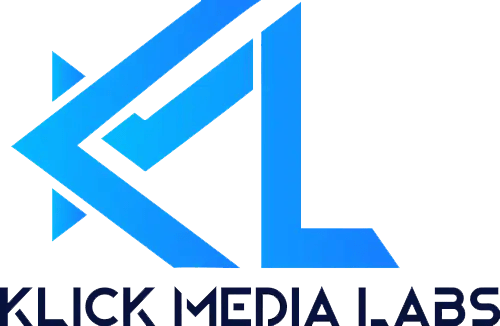The battle between traditional marketing and digital marketing has been raging on for years, leaving businesses in a constant state of confusion. Are billboards and TV ads still worth the investment or should all your efforts be focused on social media and SEO? In this blog post, we’ll dive deep into the world of marketing to uncover the key differences between these two powerhouses. Get ready to discover which strategy will give your business an edge in today’s ever-evolving landscape!
What is Traditional Marketing?
Traditional marketing refers to the process of marketing a product or service using offline channels such as print, television, radio, and direct mail. Traditional marketing is often considered to be more expensive and less effective than digital marketing.
Digital marketing, on the other hand, is the process of marketing a product or service using online channels such as search engines, websites, social media, and email. Digital marketing is often considered to be more effective and less expensive than traditional marketing.
What is Digital Marketing?
Digital marketing is the process of using digital channels to promote or market products and services to consumers and businesses. These digital channels include search engines, social media, websites, email, and mobile apps.
Digital marketing uses data-driven techniques to target customers where they are most active online. This allows businesses to reach a larger audience with personalised messages that are more likely to convert into sales or leads.
Digital marketing is also more cost-effective than traditional marketing methods because it can be targeted specifically to the demographics of your ideal customer. Additionally, digital channels allow you to track results and measure ROI (return on investment), so you can constantly adjust your Digital Marketing Strategies for maximum effectiveness.
Pros and Cons of Traditional and Digital Marketing
There are a few key differences between traditional marketing and digital marketing. Here are the pros and cons of each:
Traditional Marketing:
-Pro: You can target a specific audience with traditional marketing techniques. This is because you can use things like demographics, psychographics, and other data to segment your target market.
-Con: Traditional marketing can be quite costly. This is because you have to pay for things like advertising space, print materials, etc.
-Pro: You can reach a wide audience with traditional marketing. This is because traditional marketing techniques often have a mass appeal.
-Con: It can be difficult to track the results of your traditional marketing campaigns. This is because there isn’t always a way to measure how many people saw or heard your ad, for example.
Digital Marketing:
-Pro: You can reach a global audience with digital marketing. This is because the internet knows no bounds!
-Con: You need to have a strong understanding of technology to succeed in digital marketing. This is because things like website design, coding, and social media platforms are all integral to digital marketing success.
-Pro: It’s easy and affordable to get started in digital marketing. All you need is a laptop and an internet connection!
-Con: The competition is fierce in the world of digital marketing. This is because anyone with a computer and an internet connection can get started in
How to Choose Between Traditional and Digital Marketing
The ever-growing digital world has given rise to a new form of marketing: digital marketing. This type of marketing uses the internet and other digital technologies to reach and engage customers. It’s a more modern approach that allows businesses to connect with their target audience in a more direct and personal way.
So, what are the differences between traditional marketing and digital marketing? Here are some key points to consider:
– Traditional marketing typically relies on print, television, or radio advertising, whereas digital marketing uses online channels such as email, social media, and webinars.
– Digital marketing is more interactive and engaging than traditional marketing, making it more effective at building relationships with customers.
– Traditional marketing is generally more expensive than digital marketing, due to the higher cost of producing materials such as print ads or TV commercials.
– Digital marketing is more trackable and measurable than traditional marketing, so you can easily see how your campaigns are performing and make necessary adjustments.
Now that you know the basics of each type of marketing, you can start to decide which one is right for your business. Consider your budget, your target audience, and your goals for your campaign before making a decision.
Tips for Succeeding with Both Types of Marketing
Digital marketing is more affordable and effective than traditional marketing, but both types of marketing can be successful if you understand how to use them correctly. Here are some tips for succeeding with both types of marketing:
– Plan your marketing campaigns carefully and set clear goals. Know who your target audience is and what you want to achieve with your campaign before you start.
– Make sure your traditional marketing efforts are targeted and effective. Don’t waste money on ads that aren’t reaching your target audience.
– Use digital marketing tools to reach more people for less money. Social media Marketing
, email marketing, and SEO are all great ways to reach more people without breaking the bank.
– Measure your results carefully so you can see what’s working and what isn’t. Adjust your campaigns accordingly to get the most out of your marketing budget.
By following these tips, you can succeed with both traditional and digital marketing methods. By carefully planning your campaigns and measuring your results, you can ensure that you’re getting the most bang for your buck no matter which type of marketing you’re using.
Alternatives to Traditional and Digital Marketing
There are a number of alternatives to traditional marketing and digital marketing. One alternative is content marketing. Content marketing focuses on creating and distributing valuable, relevant, and consistent content to attract and retain a clearly defined audience — and, ultimately, to drive profitable customer action.
Another alternative is inbound marketing. Inbound marketing is a holistic approach to attracting, engaging, and delighting customers that aligns with the way people shop and buy today. It’s about creating valuable experiences that have a positive impact on people and your business.
And lastly, there’s influencer marketing. Influencer marketing is a type of word-of-mouth (WOM) marketing that identifies the individuals that have influence over potential buyers, and orient marketing activities around these influencers.
Conclusion
Traditional marketing and digital marketing are two distinct methods of reaching your target audience. Both have their own advantages and disadvantages, so it’s important to determine which one is best for you before investing in a particular strategy. While traditional methods typically require more time and money to execute, they can also be far less expensive than their digital counterparts if done correctly. Digital marketing tends to be much faster-paced, allowing you to reach more potential customers in less time; however, the effectiveness of this method relies heavily on data analysis and having an effective strategy in place. Ultimately, no two strategies are alike when it comes down to achieving success with either traditional or digital marketing; but whichever option you choose should ultimately reflect your individual business goals.




